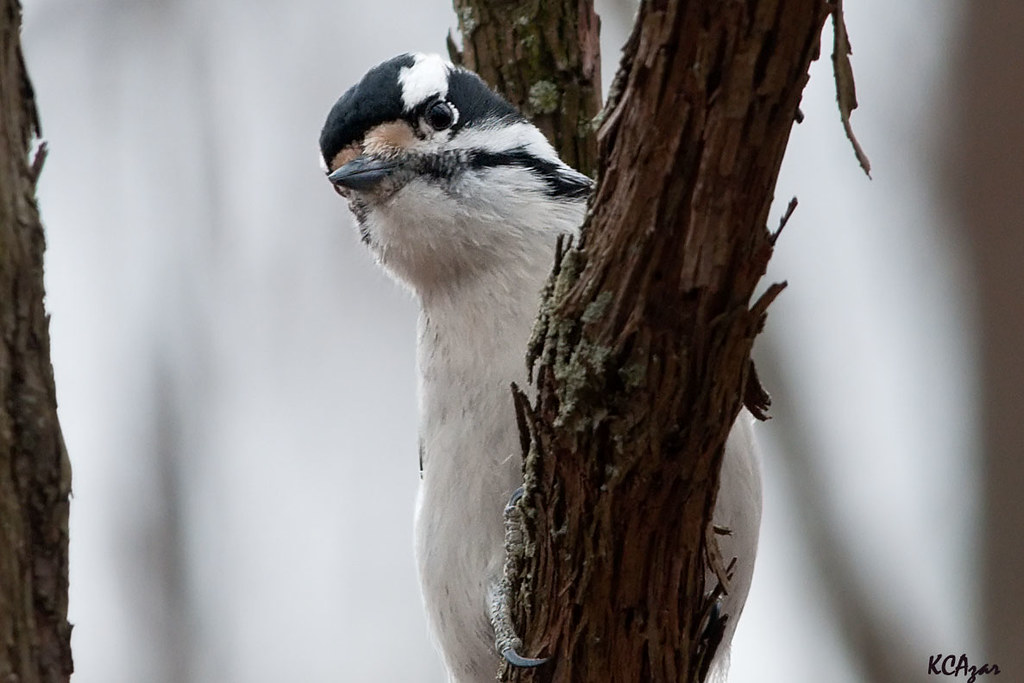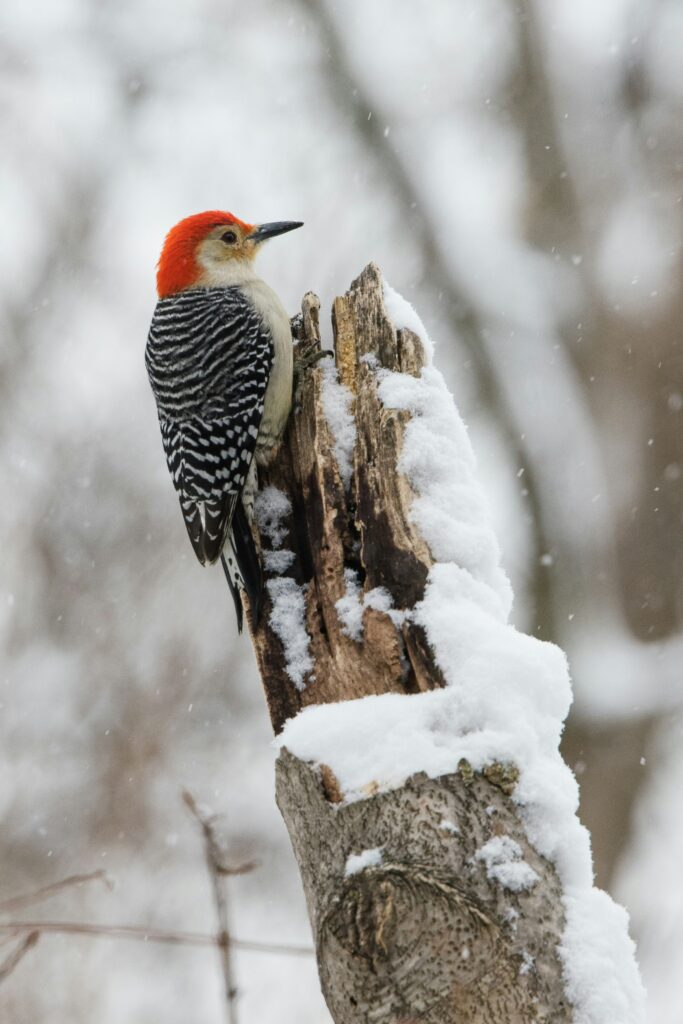Go for a hike in any wooded area and you are bound to see holes in trees. Some may be from branches that have died and fallen off, some may be from one tree falling and hitting another, but many are probably from the percussion section of nature’s band: the woodpecker.
Unlike other birds that have melodious and beautiful songs to attract mates and claim territories, woodpeckers have vocal calls (chirps, chuurs, rattles or chatters) and that very resonant “drumming” that identifies them instantly (“drumming” is the act of rapidly striking the tip of the bill against a tree, branch or hollow object).

What’s that sound?
Mid-February is the time to hit the woods and listen for the many pitches and cadences of our resident woodpeckers. This is the time of year that they are beginning their search for an appropriate new home. Moving from tree to tree they tap and listen, tap and listen, tap and listen until they have found the perfect nesting site, usually in a dead or dying tree.

Drumming is also used to communicate information such as anxiety, excitement, attracting a mate and announcing possession of a territory. Each species of woodpecker has its own distinctive drumming tempo, length, and rhythm.
Along with drumming, each woodpecker’s wide vocabulary of calls can help you identify who you are hearing. Common woodpeckers in our area of Minnesota include the red-bellied woodpecker, downy woodpecker, and pileated woodpecker.
Here are two examples of calls to help get you started:
How do they do that?
When watching a woodpecker, have you ever wondered why they don’t fall off the tree? Enter zygodactyl feet (two toes front and two toes back) and a kickstand tail!
Woodpeckers are one family of birds that have X-shaped toes instead of one in back and three in front. Having two toes on the bottom or back side of the foot help to better support the bird’s weight when hanging off a tree or suet feeder. Woodpeckers also have a larger tailbone along with extremely rigid tail feathers, which helps to prop the bird securely against a trunk, just like your bicycle kickstand.
Who’s in there?
Woodpeckers are among the list of animals known as keystone species. This means that they create habitat suitable for other animals. For example, these birds use their nesting site for only one season. The next year they build a new one. Old holes in trees are utilized by many other species of animals from bluebirds and owls to small mammals or raccoons. An old snag (dead) tree with many roosting or nesting holes may actually be a multi-level condominium for critters!
If you have a dead tree on your property or in your yard, as long as it does not cause safety concerns, consider leaving all or part of it and watch the woodpeckers when they come. Leaving a space for nature, however small, is one thing we can do to help our fellow community members of the natural world. It’s always an education. Enjoy!
(Looking for additional animal signs that warmer weather is on its way? Read “Signs of Spring” from February 2021.
Visit the following sites to learn more about woodpeckers’ remarkable adaptations:
Want to go on a walk with a Belwin Naturalist? See all upcoming events at Belwin.
Lynette Anderson is a Belwin Conservancy Interpretive Naturalist and Restoration Specialist. She is involved with both programming and land management at Belwin and enjoys creating walks and talks that showcase our work to restore native habitat for all the critters and plants.